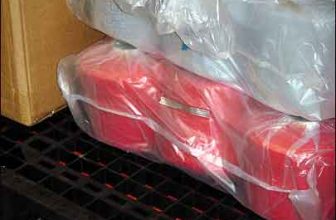
Dillard and the University of Arkansas RFID Research Center quantify the superiority and durability of RFID inventory
[ad_1]
The University of Arkansas Information Technology Research Association (ITRI) RFID Research Center released a research report stating that RFID can not only improve inventory accuracy, but also replace existing manual inventory counting. The report describes the third phase of item-level RFID technology testing in the Dillard retail environment.
The test was carried out in three local stores in Dillard in the fall of 2008. Dillard is one of the largest clothing retailers in the United States, with more than 300 stores in 29 states. During the project period, there happened to be a participating store to perform a scheduled inventory count twice a year. Bill Hardgrave, Executive Director of ITRI and Director of RFID Research Center, announced the research results in RFID Journal LIVE! 2009.
Although Dillard had already arranged an annual inventory plan for all stores, the research team at the University of Arkansas did not know in advance that they would encounter store inventory during the project. “We happened to encounter the inventory of the store during the test, which made the test results more interesting”

Dillard, one of the largest clothing retailers in the United States, and the University of Arkansas Information Technology Research Association RFID Research Center collaborated to study the application of RFID in the retail industry
The test was carried out in Dillard’s three stores, and initially a total of four stores participated-two test stores, each with fixed and handheld RFID readers, and two control stores-but one of the control stores was closed during the test. During the project, a men’s jeans manufacturer tied tags containing EPC Gen 2 RFID inlays to each piece of clothing, and then sent them to the three stores. During the test period, the three stores performed a half-year inventory, and the three stores after the inventory achieved nearly perfect inventory accuracy. After that, the researchers continued to study the advantages of RFID in retail applications.
The researchers found a very important phenomenon: After all three stores completed the half-year inventory, the inventory accuracy was quite high, but the inventory accuracy rate of the control store declined quickly, and the inventory accuracy rate of the two RFID stores continued to improve.
According to the researchers, RFID not only improves the accuracy of the library, but also eliminates the existing costly and time-consuming manual inventory once or twice a year, and the process of reporting the results to the accountant or IRS.
This project is the third phase of Dillard and the University of Arkansas retail test. Phases 1 and 2 study the application of RFID in clothing and shoes in a similar environment. In the first two stages, the researcher checks the read distance, read rate, and validity of the hardware. The third stage tests this technology in a real environment and evaluates its commercial value.
The latest research focuses on whether this technology can solve the two major challenges common to retailers-too much inventory and too little inventory, both of which will cause stores to suffer losses. A number of studies have shown that in 50% of stores, theft, cashier errors, shipping problems, and inventory errors are the main reasons for inaccurate inventory.
The third phase of the project lasted 10 weeks. On Monday and Friday, before the store opens-a third-party inventory check team performs an inventory of men’s jeans in the control store and the test store. To accomplish this task, the inventory team uses a barcode scanner to read the barcode SKU label of each pair of jeans.
The test store installs a fixed Gen 2 UHF reader in Kumen to read the delivered labeled items (the ID code of each tag corresponds to the SKU and description of the product in the back-end system). In order to track possible theft and clerk errors, readers are installed at the employee exit and the customer exit closest to the jeans department. The label is removed from the product at the checkout counter and discarded, and employees track inventory based on the SKU numbers sold. The store collects data from each RFID reading to understand when the goods arrive and when they leave the store. Researchers also used hand-held RFID readers to take stock of labeled jeans on the shelves of two stores. During the test, approximately 11,000-2,000 items were labeled.
Five weeks after the test started, all three stores started a half-year inventory of the entire store in their plan. The employees used bar code scanners and manual inventory, and it took two weeks to complete the inventory. Three weeks after the inventory, the researchers continued to test the RFID and found that the half-year inventory increased the inventory accuracy rate of the test store by 17%. In the next three weeks, the store used RFID to further increase the inventory accuracy by 4%, according to a third-party inventory check team. . On the contrary, the inventory accuracy of the management store increased by 12% after half a year of inventory, and the accuracy rate decreased by 13% in the next 3 weeks. In other words, the inventory accuracy of stores that do not use RFID will quickly lose after the inventory is completed, while inventory accuracy will always be maintained or improved in RFID stores.
Using RFID, Hardgrave said, the whole store can be counted more than twice a year, or even once a week.
Researchers have also tested RFID as an anti-theft function or security device, which resembles a typical shoplifting scene, such as taking a stack of jeans, holding them under the arm, running or walking through the door reader, almost without exception, tags Are read one by one.
The Hardgrave team also analyzed RFID data to understand the inside story of loss prevention. Because the sales staff will remove the RFID tags at the checkout counter, if employees and customers exit the inspection tags, it can be regarded as theft or employee error. In order to distinguish the two, the researchers compared the RFID read information with the POS information. If there is a match, the system determines that the employee made a mistake, and if no match is found, it is theft.
[ad_2]




